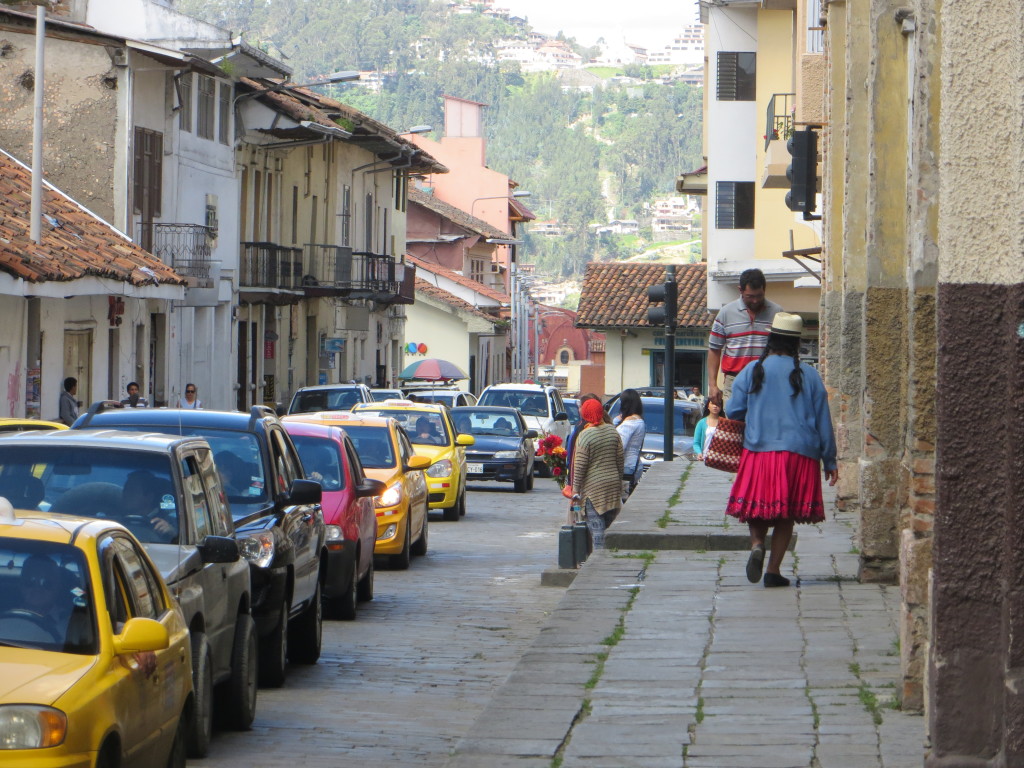This post is for those of you who say you envy us. Sit down on your comfortable American style easy chair, pull your grandchild onto your lap and hear the truth about travel.
It is not easy
The truth is, in these early days of finding our way around a new place, Steve and I argue.
In Spain we argued about how far to trust the GPS. I am an old fashioned girl and believe we should learn the street names. We can use GPS to show us the way then, by mapping the route in our heads: two blocks right, one block left, etc, we find our way under our own power. Steve prefers to trust the technology. He carries the phone and follows “her” directions step by step.
This was an on-going battle in Spain. In my experience “she” is not always right and, once I have a map in my head, I begin to suspect when “she’s” got it wrong. Not Steve, Steve continues to trust technology over my assessment which not only – sometimes- takes me out of my way but – often – pisses me off.
That has happened here too. Looking for a music venue last night Steve trusted the GPS even though the announcement clearly provided the intersection where the venue was located. However, the GPS located the place two blocks away from the intersection listed in the announcement. Steve went with the GPS.
I let Steve lead us two blocks out of the way to a deserted dark intersection. There was no music venue.
After we wandered from corner to corner for a while. I “suggested” we go back to the intersection printed in the announcement.
We walked two blocks back and there it was!
No, Steve did not thank me.
But the reliability of “her” is an old argument. The one that has us conversing in staccato whispers in the streets of Cuenca these days is the traffic.
THE TRAFFIC
Every culture is revealed in their driving style. In South Africa it was fast and impulsive. For certain classes of drivers, a class that was apparently self-appointed, THE RIGHT OF WAY DOESN’T COUNT: sudden stops, unexpected turns from the inside lane, crowding to the front of a long line, aggressive accelerations were part of the driving culture. To drive defensively in South Africa one has to always expect the unexpected.
In Seattle, where we just came from, those who choose to drive a car are seen as less than stellar members of society. The consensus seems to be drivers of cars consciously choose to pollute the environment we all live in. In addition, the drivers of cars deliberately contribute to traffic congestion out of misplaced self-worth or sheer laziness. Drivers in Seattle are flaunting their white world privilege and general being something of a prick.
In Seattle PEDESTRIAN HAVE THE RIGHT OF WAY. Pedestrians step into the street without even looking up from their cell phones. If, in a moment of inattention, the driver of a car at the same intersection should stop too suddenly or, carelessly allow the front tires to cross the white line marking the far side of the intersection, the pedestrian can and will, because the driver, by the choice to drive, is something of a prick, bestow a look of outraged and righteous indignation – and judgement.
That is driving in Seattle.
Driving in Washington DC is about road rage but let’s move on.
From Seattle we come to Ecuador where DRIVERS HAVE THE RIGHT OF WAY, and they don’t give it up. Not for trucks or buses or taxies and especially not for pedestrians. Nobody gives it up.
This has become a serious point of contention between Steve and I. To my mind, Steve responds as if crossing the street is a sport. He comes to an intersection, looks for the first moving object and, if he thinks he can out pace it, he crosses. The object, I think, is to not break his stride. I find his behavior reckless and unnecessary.
He seems to have forgotten that this same behavior brought him into contact with a moving vehicle in 1997. He still carries the scars from losing that contest.
So we fight. He insists his behavior is safe and he is in complete control. I insist that it is not safe. I believe that responding quickly to the speed and direction of the first moving object one sees doesn’t allow time to take in the entire environment. My style of crossing a busy, unregulated street leaves me standing on one side of the road and Steve standing on the other waiting for me to cross safely.
We will work it out. He has started to slow down, because I am so slow. He could make it but I am a liability. That is fine. We are retired old folks in a foreign country. We have nothing better to do than wait to die. I think we can stand at the intersection for an additional 15 seconds just to make sure we don’t die here.



This all sounds familiar. Mark
I need to add that for streets built how many hundred years ago, there are sidewalks which is more than I can say for many parts of the US. Take Sierra Vista AZ, a city recently sprung out of the desert. It was made for vehicles, not people – just stunning. There is a trend there that if you do not stop for pedestrians in a crosswalk, you are fined so many multiples of your daily wage. Merida is one of those cities, San Luis Potosi another, and judging by the way drivers pay attention to pedestrians I would say the rules as posted on easy to read signs are taken seriously. Mark